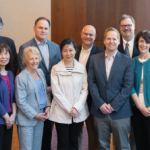Can principles from engineering provide a broader understanding of how the human skeleton works and be used to help prevent a common and often consequential event for people as they age—bone fractures? Research from a team of investigators that includes orthopedic surgeons and mechanical engineers suggests that, yes, looking at how engineered materials, such as…







